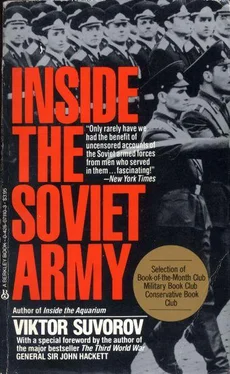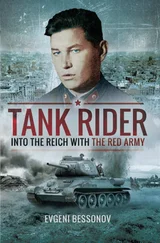2
Soviet naval strength is based on submarines. These are divided by function, into submarines used for:
command
ballistic rockets
cruise missiles
torpedoes
They are further classified according to their method of propulsion-nuclear or diesel-electric. The building of diesel-electric submarines (except for some used for diversionary or reconnaissance purposes) has been halted. Henceforth all Soviet submarines will have nuclear propulsion.
Nuclear submarines are grouped in divisions, each of 8 to 12. All the submarines in a division have the same type of armament. A flotilla consists of 4 to 5 divisions. They have mixed complements and may consist of between 35 and 64 nuclear submarines with varying functions.
Diesel-electric submarines are organised in brigades each of 8 to 16. Brigades may form divisions (2 to 3 brigades) or squadrons (4 to 6 brigades).
3
Each fleet has a naval aviation component designated, for instance, `Naval Aviation of the Northern Fleet'. Each such component is made up of air divisions and of independent regiments and is the equivalent of an Air Army. Each fleet's naval aviation normally includes a division armed with long-range air-to-surface missiles, for operation against enemy aircraft carriers, one or two divisions of long-range anti-submarine aircraft and independent regiments with anti-submarine seaplanes, torpedo-bombers, reconnaissance aircraft and supply and transport aircraft. In the last few years regiments of deck-landing aircraft and helicopters have been formed.
4
The Soviet Navy must be the only one in the world in which a nuclear-propelled cruiser, armed with missiles, is relegated to an auxiliary category. In fact, every Soviet surface ship, whether it is a battleship or a missile-cruiser, ranks as auxiliary (the exception is the aircraft carrier which is considered as a part of the naval air force). Perhaps this is correct; in a global war submarines and aircraft would play the primary roles. All other forces would work to support them. And, no matter how the number of Soviet surface ships may grow, Soviet submarines will always outnumber them. Moreover there has recently been a noticeable trend towards an increase in the displacement of submarines and it is quite possible that they will eventually surpass the surface ships in tonnage, too, and will maintain their superiority permanently.
Soviet surface ships are organised in groups (for small ships only), brigades (medium-size ships and groups of smaller ones), divisions and squadrons.
In the next few years, the Soviet Navy will be enlarged by the acquisition of a series of large nuclear-propelled missile cruisers. Intensive work is being put into the design and building of large nuclear-propelled aircraft carriers. Ships like the Moskva and the Kiev have only been built in order to acquire the experience needed before really large ships are built. Particular attention will be paid to the building of large landing ships which are capable of a high degree of independence. The construction of small surface ships will continue. Despite the enormous progress which has been made in building surface ships, however, they will continue to be classified as auxiliary forces.
5
The presence of diversionary SPETSNAZ sub-units in the Soviet Navy is a closely guarded secret. Yet they exist and have done so for a long time. Already by the end of the 1950s each Fleet had its own SPETSNAZ diversionary brigade, under the direct command of the Third Department of the Intelligence Directorate at Naval Headquarters.
A diversionary brigade has one division of miniature submarines, two or three battalions of frogmen, a parachute battalion and a communications company. It forms an entirely independent combat unit and an independent arm of service within the fleet. For camouflage purposes, its members sometimes wear the uniform of the marine infantry. In other circumstances they may wear any other type of uniform, again as camouflage. The parachutists wear Naval Aviation uniform, the crews of the miniature submarines, of course, that of ordinary submarine crews, the remainder that of seagoing personnel, coastal artillery forces, etc.
Again for camouflage purposes, the personnel of a diversionary brigade is dispersed between several naval bases. This does not prevent it from functioning as a unified combat organisation. In wartime these brigades would be used against enemy naval installations, in the first place against nuclear submarine bases. Groups of diversionary troops may operate from surface ships or from large submarines or may be landed from aircraft. In addition, a unit of large fishing trawlers would be mobilised in wartime to launch and to support operations by miniature submarines. The compartments of these trawlers, designed to hold large catches, are ideal for the rapid launch or recovery of miniature submarines and small diversionary craft.
The diversionary SPETSNAZ brigades of the Navy, like those serving with Fronts, each have as part of their complement a headquarters company of specialists, whose primary task is the assassination of political and military leaders. These companies are disguised as naval athletic teams. These `sportsmen' are, naturally, keen on rowing, swimming and scuba-diving as well as on shooting, boxing, wrestling, running and karate.
As a well-known example we can quote Senior Lieutenant Valentin Yerikalin, of the SPETSNAZ brigade of the Black Sea Fleet, who won a silver medal for rowing at the Olympic Games held in Mexico City. There was no attempt to conceal the fact that Yerikalin was a naval officer and a member of the Central Army Sports Club. Some years later this `sportsman' turned up in Istanbul, having now become a diplomat. He was arrested by the Turkish police for trying to recruit a Turkish subject to work for the Black Sea Fleet, or, more precisely, for the diversionary brigade of this Fleet.
6
The Navy's coastal rocket and artillery troops consist of regiments and independent battalions. They are equipped with both stationary and mobile rocket launchers and with artillery weapons. Their task is to cover the approaches to principal naval bases and ports.
7
Each Fleet has Marine Infantry contingents, consisting of regiments and brigades. In their organisation, these regiments are similar to the motor-rifle regiments of the Land Forces. They differ from the latter in receiving special training for operating in varying conditions and also in being allocated personnel of a higher calibre. Generals from the Land Forces who have watched exercises carried out by the marine infantry often say, with some envy, that a regiment of marine infantry, with the same equipment as that issued to the Land Forces, is the equivalent in its operational potential of one of the latter's motor-rifle divisions.
The Soviet Navy has only one brigade of marine infantry. This belongs to the Pacific Fleet. It consists of two tank and five motor-rifle battalions and is equipped with especially heavy artillery. This brigade is sometimes mistakenly taken for two independent regiments of marine infantry.
The Soviet marine infantry has a very promising future. In the next few years it will receive new types of equipment which will enable it to put large units into action against distant targets. Special combat equipment is being developed for such operations by the marine infantry.
8
In our examination of the Soviet Navy we must bear in mind a myth which is widely believed in the West-`The Soviet Navy was weak until a strong man, Gorshkov, arrived and brought it up to its proper strength'. This presumption is untrue in several respects.
Until the Second World War, Soviet Communist expansion was directed at states adjacent to the USSR-Finland, Estonia, Latvia, Lithuania, Poland, Germany, Romania, Turkey, Iran, Afghanistan, Mongolia, China. Understandably, in this situation, the senior officers of the Navy wielded little influence, for no one would allow them to build up the Navy at the expense of the Land or Air Forces. For the USSR, the Second World War was a land war, and during the first few years after the war, Communist aggression, too, remained entirely land-based-Czechoslovakia, Romania, Hungary, Turkey, Greece, Korea, China. If Gorshkov had appeared during this period, no one would have allowed him to become all-powerful. During the first few years after the war too, there was another problem of overriding urgency-that of catching up with the United States in the fields of nuclear weapons and of delivery systems for them. Until this problem was solved, there could be no question of allowing Gorshkov to build a navy.
Читать дальше












